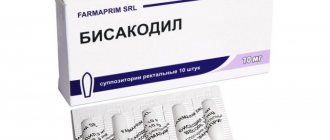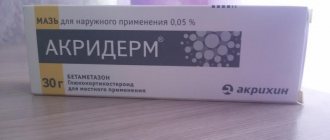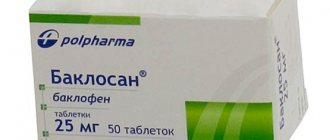Use of Dopegit during lactation and pregnancy
Based on the results of clinical studies, it was found that Dopegit during pregnancy in the 2-3 trimesters does not lead to the development of complications. However, strictly controlled studies of the effect of the drug in the third trimester have not been conducted, so the possibility of taking it must be decided with a doctor who can balance the benefits for the mother and child with the expected risks.
In a study of the health status of children whose mothers took Dopegit during pregnancy after the 26th week, no undesirable effects were identified.
The active substance of the drug is excreted in breast milk, so Dopegit during lactation is prescribed only after a careful assessment of the possible benefits to the mother and the existing risk to the child’s health.
Analogs
If Dopegin does not help well or there are contraindications to its use, analogues of the drug may be prescribed to reduce the blood pressure of the expectant mother. You cannot replace the prescribed drug on your own or start taking analogues; you need to consult a doctor. Most often, the following analogues are prescribed:
- Aldomet 250. The drug can be prescribed for the treatment of hypertension of varying degrees, including in pregnant women.
- Ekibar. The active ingredient of this drug is methyldopa, it is used to lower blood pressure.
- Nifedipine. The active component of this drug is nifedipine. The drug helps in the treatment of essential hypertension and angina pectoris.
- For emergency treatment of a hypertensive crisis in an expectant mother, Clonidine can be used one-time.
Dopegit is approved for use during pregnancy if the expectant mother experiences surges in blood pressure. The medicine can be used in the early stages, but only in case of urgent need and for a short course. In later stages, the drug is prescribed in a course until stable blood pressure levels are achieved.
Contraindications
Dopegit is not prescribed against the background of:
- Acute hepatitis, liver cirrhosis;
- History of liver disease;
- Concomitant therapy with MAO inhibitors;
- Depression;
- Hemolytic anemia;
- Acute myocardial infarction;
- Pheochromocytomas;
- Hypersensitivity to the active substance (methyldopa) and auxiliary components.
When taking Dopegit, caution should be exercised against the background of renal failure (in this case, it is necessary to adjust the daily dosage), diencephalic syndrome, as well as in children and the elderly.
Pharmacological action of the drug
Dopegit tablets are classified as vegetotropic antihypertensive drugs with central action (reviews from medical professionals note that many women drink this medicine throughout pregnancy). Once in the body, the medication is converted to create alpha-methylnorepinephrine, which has a hypotensive effect by affecting certain mechanisms. The drug reduces sympathetic tone. This occurs due to the activation of the main inhibitory presynaptic α2 receptors.
The drug acts as a false neurotransmitter and replaces endogenous dopamine at dopaminergic nerve endings. Reduces the activity of renin in the blood and has a similar effect on total peripheral resistance. Stops the synthesis of norepinephrine. Reduces the formation of adrenaline, dopamine, norepinephrine and serotonin due to suppression of the activity of the enzyme dopa decarboxylase.
The active ingredient, methyldopa, does not affect the functioning of the cardiac organ and does not reduce cardiac output. Does not provoke the appearance of reflex tachycardia. Does not affect glomerular filtration rate. Does not affect renal blood flow and does not exert any pressure on the filtered fraction.
Sometimes your heart rate may decrease while you take the medicine. The medication quickly lowers blood pressure levels. In rare cases, may cause postural hypotension.
After the first dose of the tablets, the greatest effect is observed after 4-6 hours and lasts from 12 to 24 hours. The medicine allows you to lower your blood pressure on the second or third day of taking the pills.
How to use Dopegit
Dopegit should be taken after or at the same time as meals. The daily dosage and frequency of use are determined by the doctor individually.
In the first two days of therapy, take one Dopegite tablet three times a day. Subsequently, depending on the effect of therapy, the daily dosage is gradually increased or decreased. To reduce the severity of sedation, the evening dose should first be increased.
Take a maximum of 2 g of Dopegite per day. If adequate blood pressure reduction is not achieved at this dosage, the drug should be used in combination with other antihypertensive medications.
It should be taken into account that tolerance may develop after 1-3 months of therapy. In this case, a diuretic is added to the treatment course or the dosage of Dopegit is increased.
For older people, it is better to start treatment with minimal doses, which is associated with the development of a sedative effect. The dose for children is calculated based on weight - 10 mg/kg per day. If the therapeutic effect is insufficient, it can be gradually increased to 65 mg/kg.
Release form and composition
The main active component of the drug is methyldopa or a derivative of the substance (methidopa sesquihydrate) in a volume of 250 mg per tablet. Additional ingredients include stearic acid, talc, corn starch, ethylcellulose, magnesium stearate. The drug belongs to the pharmacological category of stimulants of central α2-adrenoreceptors.
Dopegit helps reduce blood pressure by normalizing the tone of the sympathetic nerves and the general resistance of the vascular walls, reducing the activity of a special enzyme in the blood plasma, which is involved in increasing blood pressure. It suppresses the synthesis of stress hormones and reduces their concentration in the blood, without having a negative effect on cardiac and renal function, but is able to slow down the pulse and reduce the volume of circulating blood.
The ingredients of the medicine equalize blood pressure 4-6 hours after administration, eliminate the symptoms of hypertension (headaches, dizziness, nausea, weakness) and maintain the effect throughout the day. The medicine is available in the form of white or gray-white tablets, flat and round, with a line in the middle and engraved with the Latin name of the drug (DOPEGYT). The pills are packaged in dark glass containers of 50 pieces, one bottle in a cardboard box.
Attention: after stopping the drug, blood pressure levels return to baseline within 1-2 days, but in some cases withdrawal syndrome is possible - the pressure rises sharply, which can lead to a hypertensive crisis.
Side effects
At the beginning of therapy, as well as after increasing the dosage, Dopegit, according to reviews, can cause disorders of the central and peripheral nervous system in the form of:
- Transient drowsiness;
- Headache and weakness;
- Paresthesia;
- Dizziness;
- Anxiety;
- Depression;
- Transient and mild psychosis;
- Nightmarish dreams.
In some cases, the development of parkinsonism, choreoathetosis, symptoms of cerebrovascular insufficiency, and peripheral paresis of the facial nerve is observed. In addition, Dopegit, according to reviews, can cause disturbances in other body systems in the form of:
- Increased angina pectoris, worsening symptoms of chronic heart failure, sinus bradycardia, decreased sensitivity of the carotid sinus, orthostatic hypotension, peripheral edema, weight gain (cardiovascular system);
- Pancreatitis, colitis, vomiting, diarrhea, inflammation of the salivary glands, ulceration or blackening of the tongue, nausea, constipation, flatulence, dry mouth, jaundice, hepatitis, cholestasis, increased activity of liver enzymes (digestive system);
- Bone marrow suppression, leukopenia, agranulocytosis, thrombocytopenia, hemolytic anemia (blood-forming organs);
- Hyperprolactinemia, gynecomastia, galactorrhea (endocrine system);
- Amenorrhea, decreased potency (reproductive system);
- Arthralgia, myalgia (musculoskeletal system);
- Nasal congestion (respiratory system).
Of the allergic reactions associated with the use of Dopegyt, according to reviews, the most likely development is vasculitis, fever, eosinophilia, toxic epidermal necrolysis, and exanthema.
In case of an overdose of Dopegyt, the following may be observed: vomiting, tremor, severe arterial hypotension and bradycardia, drowsiness, weakness, nausea, lethargy, dizziness, constipation, diarrhea, flatulence, intestinal atony.
Instructions for use DOPEGYT®
During treatment with drugs containing methyldopa, in rare cases, hemolytic anemia may develop. If symptoms indicating hemolytic anemia develop, it is necessary to determine the hematocrit and hemoglobin level. If anemia is confirmed, further studies should be performed to confirm hemolysis. If hemolytic anemia is confirmed, methyldopa should be discontinued immediately. After discontinuation of methyldopa, hemolytic anemia resolves rapidly with or without treatment with corticosteroids. However, in rare cases, deaths have been observed. If hemolytic anemia is caused by taking methyldopa, the patient should not continue to receive this drug.
Some patients taking methyldopa for a long period of time may experience a positive Coombs test. According to the literature, the incidence of a positive Coombs test may be 10-20% in patients receiving this drug. A positive Coombs test is rarely observed during the first 6 months of treatment. If it does not develop within 12 months, then its development is unlikely with further use of this drug. A positive Coombs test is dose-dependent and is unlikely to develop at doses less than 1 g/day. A positive Coombs test during treatment with methyldopa will become negative only a few weeks or months after discontinuation of the drug.
Before starting a course of treatment, as well as at 6 and 12 months of treatment with methyldopa, the number of blood cells should be examined and a direct Coombs test should be performed.
The mere presence of a previous positive Coombs test or its occurrence in a patient during treatment is not a contraindication to methyldopa therapy. If the Coombs test becomes positive during treatment with methyldopa, the presence of hemolytic anemia and the clinical significance of a positive Coombs test should be assessed.
Information about the presence of a positive Coombs test helps in the evaluation of cross-blood compatibility testing. If a blood transfusion is necessary in a patient receiving methyldopa, direct and indirect Coombs tests should be performed. In the absence of hemolytic anemia, only the direct Coombs test is usually positive. The direct Coombs test itself does not affect blood typing or crossmatching. If the indirect Coombs test is also positive, cross-matching may be difficult to assess. In such cases, consultation with a hematologist or transfusiologist is necessary.
During treatment, rare cases of leukopenia, granulocytopenia and thrombocytopenia are possible. Typically, the granulocyte count normalizes after discontinuation of methyldopa. Rare cases of reversible thrombocytopenia have also been reported.
Some patients experienced fever during the first three weeks of drug therapy, which was sometimes accompanied by eosinophilia or increased liver transaminases. In addition, taking methyldopa may be accompanied by the development of jaundice. Jaundice usually appears during the first two to three months of therapy. In some cases, cholestasis was confirmed against the background of jaundice. In very rare cases, patients have developed necrotizing hepatitis with a fatal outcome. Liver biopsies performed in several patients with liver dysfunction showed microscopic focal necrosis consistent with a hypersensitivity reaction.
Before starting treatment with methyldopa and during the first 6-12 weeks of treatment, as well as at any time with the development of fever of unknown etiology, liver function tests are recommended, as well as a qualitative and quantitative general blood test with leukemia.
If fever, changes in liver enzyme activity, or jaundice occur, treatment with methyldopa should be discontinued immediately. If this condition is caused by a hypersensitivity reaction, the increase in temperature and changes in laboratory parameters disappear after discontinuation of the drug. Such patients should not be further prescribed methyldopa.
Patients with a history of liver disease or dysfunction should use this drug with extreme caution.
Patients receiving methyldopa may require reduced anesthetic doses. If hypotension occurs during anesthesia, vasoconstrictor drugs can be administered to correct it. Adrenergic receptors remain sensitive while taking methyldopa (see Drug Interactions section).
Some patients may experience swelling or weight gain while taking methyldopa. In these conditions, diuretics should be prescribed. Treatment with methyldopa should not be continued if edema increases or symptoms of heart failure develop.
Methyldopa is eliminated by dialysis. Therefore, after this procedure, blood pressure in patients on hemodialysis may increase (see sections Dosage regimen and Pharmacokinetics).
In patients with severe bilateral damage to the cerebral vessels, involuntary choreoathetotic movements may occur in rare cases (see section Side effects). In this case, treatment should be discontinued.
Extreme caution is required when prescribing methyldopa to patients with hepatic porphyria or their close relatives.
Methyldopa may alter urinary uric acid test results using the phosphotungstic acid method, serum creatinine results using the alkaline picrate method, and colorimetric AST enzyme determinations. To date, there is no evidence that methyldopa altered the results of spectrophotometric determination of AST.
Because methyldopa fluoresces at the same wavelength as catecholamines, methyldopa may give pseudo-positive results and high concentrations of catecholamines may be found in urine, interfering with the diagnosis of pheochromocytoma. However, methyldopa does not affect the results of measurements of VMA (vanillyl mandelic acid) in urine.
In rare cases, urine may darken when exposed to air, which may be due to the breakdown of methyldopa and its metabolites.
Avoid drinking alcohol while taking methyldopa.
(see section Drug interactions).
Impact on the ability to drive vehicles and machinery
Methyldopa may have a sedative effect, which is usually transient and may occur either at the beginning of treatment or when the dose is increased. If patients develop symptoms indicating the development of sedation, they are prohibited from driving vehicles and performing work that requires concentration.
Drug interactions
The drug Dopegit is not recommended to be taken simultaneously with MAO inhibitors, which is associated with increased side effects.
Caution is required when using Dopegit together with tricyclic antidepressants, non-steroidal anti-inflammatory drugs, sympathomimetics, phenothiazines, iron supplements, estrogens (due to a decrease in the therapeutic effect of methyldopa).
The development of increased depression occurs when ethanol and medications that depress the central nervous system are used during therapy.
Side effects
The use of Dopegit has a side effect on the patient's body at the beginning of treatment and with increasing doses, it is manifested by general weakness, headache, retardation of psychomotor reactions, and drowsiness. Then, as a rule, the condition stabilizes on its own or after changing the dose.
In addition, Dopegit can sometimes cause undesirable reactions such as:
- Arthralgia, myalgia;
- Parkinsonism, paresthesia;
- Toxic epidermal necrolysis;
- Hyperprolactinemia, amenorrhea, gynecomastia;
- Drug fever, vasculitis;
- Pancreatitis, inflammation of the salivary glands, nausea, vomiting, colitis, diarrhea or constipation, cholestasis, jaundice;
- Pericarditis, progression of angina, myocarditis, congestive heart failure.
Very often, after long-term use of Dopegyt, laboratory blood tests for humoral immunity give a positive answer, confirming the development of drug-induced immune hemolytic anemia. Not often, the effect of the drug causes leukopenia, thrombocytopenia, granulocytopenia.
special instructions
Treatment with methyldopa requires regular monitoring of the functional indicators of the hepatic system and the condition of the peripheral blood.
Dopegit is able to mask hyperthermia in infectious diseases.
The medication affects the results of determining serum creatinine, uric acid , etc.
During storage, the urine of patients taking Dopegyt becomes darker.
The drug is discontinued when a positive Coombs test is registered and hemolytic anemia is diagnosed.
Peripheral blood counts may normalize on their own during treatment; in some cases, glucocorticosteroids .
Drinking alcohol-containing drinks is prohibited.
Dopegit can have a negative effect on driving and concentration.









